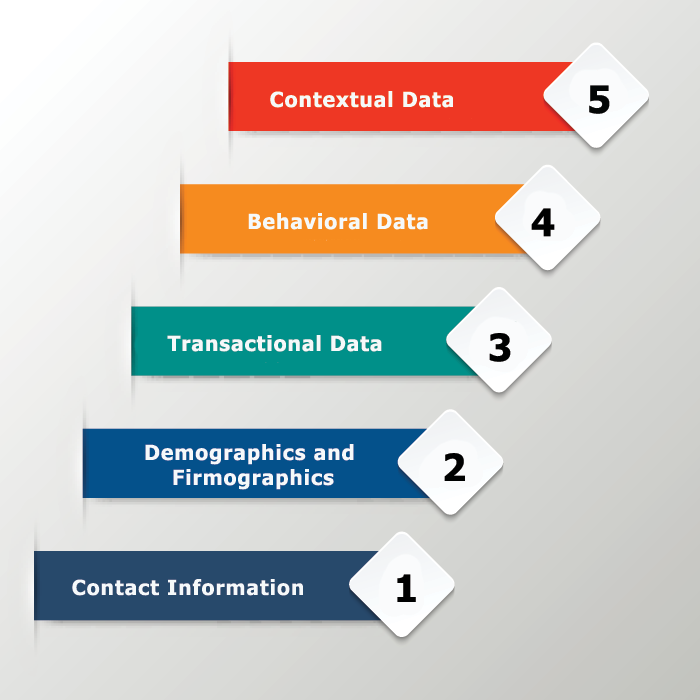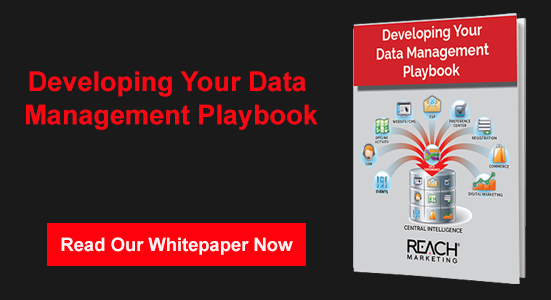Think about your local public library. It’s more than just a warehouse for books; it’s also a meeting place for groups, a social center, and a wellspring of information for researchers. Your marketing database is likewise much more than a simple repository for isolated facts. With it, you can discover a wealth of knowledge about your customers, which in turn leads to more accurate buyer personas and a better understanding of how to meet your prospects’ needs.
Your data library has five stories, each of which is loaded with important knowledge. Database services that pay attention to each of them provide deeper insights into your market.
The Ground Floor – Contact Information
The entry-level data you need to gather on your prospects is their contact information. Names, addresses, email addresses, and phone numbers connect you to your audience. On average, contact data decays – that is, it becomes outdated or obsolete – at a rate of 2 to 3 percent of your records per month. Data hygiene and enhancement can help keep contact information up to date and offset this.
It’s imperative to keep contact information accurate for two reasons. The first, of course, is so you can stay in touch with your leads. You can’t have a conversation with them if you can’t find them. The other is to ensure the highest deliverability rates on email. A well-maintained and clean database minimizes hard and soft bounces, enhancing your reputation with email service providers.
The Second Floor – Demographic and Firmographic Data
Beyond contact information, you also want to learn something about your leads’ professional lives. Where do they work? What does their organization do? Where are they located? These fundamental demographic and firmographic details tell you more than you might think. Knowing ZIP codes, for instance, can give you important clues about how far your leads are willing to travel to reach you, which then influences where you concentrate your marketing efforts.
The Third Floor – Transactional Data
By coordinating with sales, you and your database manager get input about your customers’ buying habits that you can then extrapolate to future prospects. Marketing automation technology links your CRM to a centralized hub, making the collection and interpretation of this data seamless. Transactional data might include, among other metrics:
- Purchase history
- Frequency and timing of purchases
- Discount records
- Purchase size
- Purchase volume
- Returns and exchanges
The Fourth Floor – Behavioral Data
Here’s where your database manager’s role becomes even more involved. Behavioral data about site activity can be cross-referenced with sales data or demographic details to find important correlations. Visitors to a particular page, for example, might have a strong history of investing in upgrades. You might find most of your market clustered in certain locations or within certain industries. Understanding these connections can influence how you market to your prospects and where you focus your marketing efforts to realize the greatest ROI.
The Top Floor – Contextual Data
Putting data into context and revealing the motivations and decision-making processes of your customers is the pinnacle of what database services can achieve. Understand what makes your buyers tick by putting the other information you’ve collected about them into context, and you have one of the most powerful marketing tools available.
© Reach Marketing LLC 2017 All Rights Reserved.







